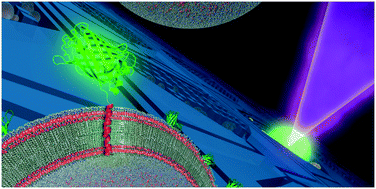Determining the lipid specificity of insoluble protein transmembrane domains†
Abstract
While the specificity of protein–lipid interactions is a key feature in the function of biological membranes, studying the specifics of these interactions is challenging because most membrane proteins are insoluble in water due to the hydrophobic nature of their transmembrane domains (TMDs). Here, we introduce a method that overcomes this solubility limitation and identifies the affinity profile of protein TMDs to specific lipid formulations. Using 5 human TMDs as a sample group, our results demonstrate that TMDs are highly selective and that these specific lipid–TMD interactions can involve either a single lipid, or the combination of multiple lipid species.

- This article is part of the themed collection: Lab on a Chip Recent HOT Articles


 Please wait while we load your content...
Please wait while we load your content...
